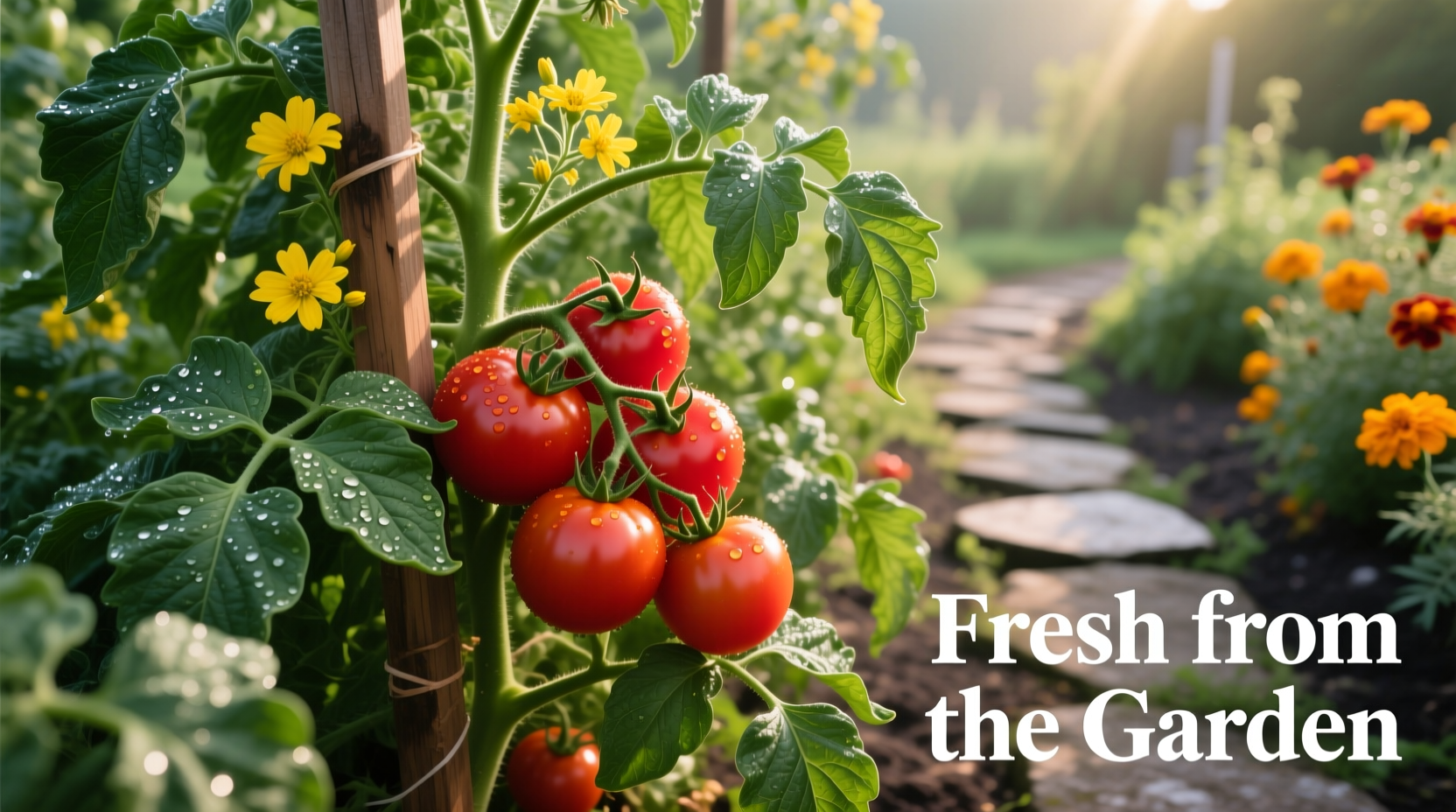Ever wonder why your tomato plants seem to disappear each fall? You're not alone. Understanding the true lifespan of tomato plants can transform your gardening strategy and potentially extend your harvest season. Let's explore the reality behind this common gardening question.
The Biological Reality of Tomato Plant Longevity
Botanically classified as Solanum lycopersicum, tomato plants are technically perennials in their native tropical habitats of South America. In ideal conditions without frost, they can live for several years. However, in most gardening contexts, they behave as annuals due to environmental constraints rather than biological limitations.

Determinate vs. Indeterminate: The Lifespan Difference
Understanding the variety you're growing is crucial for predicting lifespan and harvest patterns. This distinction significantly impacts how long your plants will produce:
| Characteristic | Determinate Varieties | Indeterminate Varieties |
|---|---|---|
| Lifespan | Single season (6-8 months) | 1-3 years in frost-free conditions |
| Growth Pattern | Bush-type, stops growing at 3-4 feet | Vining, continues growing indefinitely |
| Harvest Period | Concentrated 4-6 week window | Continuous until killed by frost |
| Common Examples | Roma, Celebrity, Bush Early Girl | Beefsteak, Cherry, heirloom varieties |
Key Factors That Determine Tomato Plant Longevity
Several environmental and cultivation factors directly impact how long your tomato plants will thrive:
Climate and Temperature Constraints
Tomato plants cannot survive freezing temperatures. According to the USDA Agricultural Research Service, exposure to temperatures below 50°F (10°C) slows growth significantly, while frost below 32°F (0°C) is fatal. In USDA zones 9-11, where frost rarely occurs, tomatoes can potentially grow year-round as perennials.
Soil Health and Nutrient Management
Continuous production requires careful nutrient management. University extension programs note that tomato plants deplete soil nitrogen rapidly. Without proper rotation and soil amendment, plants become stressed and more susceptible to diseases that shorten their lifespan.
Disease Pressure and Management
Soil-borne diseases like fusarium wilt and verticillium wilt accumulate over time. Cornell University's College of Agriculture reports that after 2-3 seasons in the same location, disease pressure typically becomes too high for healthy production, effectively limiting practical lifespan even in frost-free environments.
Strategies to Extend Your Tomato Plant's Productive Life
Overwintering Techniques for Temperate Climates
Gardeners in colder zones can extend the life of indeterminate varieties by:
- Transplanting healthy plants into containers before first frost
- Providing 6-8 hours of direct sunlight or supplemental grow lights
- Maintaining temperatures between 65-85°F (18-29°C)
- Reducing watering frequency during winter dormancy
Tropical and Subtropical Growing Considerations
In frost-free regions, tomato plants can produce for multiple years with proper care. The University of Florida IFAS Extension recommends pruning plants back by one-third after each major fruiting cycle to encourage new growth and prevent disease buildup in older wood.
Container Growing for Maximum Control
Container gardening offers the greatest potential for extending tomato plant life. By controlling soil conditions and moving plants to optimal locations, gardeners can maintain productive plants for 2-3 years. When growing tomatoes in containers, how long do tomato plants live becomes primarily dependent on your maintenance practices rather than climate limitations.
When to Start Fresh: Knowing When to Replace Plants
Even with perfect care, tomato plants eventually decline in productivity. Watch for these signs that it's time to replace your plants:
- Significantly reduced fruit set despite proper care
- Chronic disease issues that don't respond to treatment
- Woodiness in stems with reduced new growth
- Fruit quality and size diminishing over successive seasons
Most gardening experts recommend replacing tomato plants every 2-3 years even in ideal conditions to maintain maximum productivity and minimize disease pressure. This practice addresses the question of how long do tomato plants produce quality fruit rather than just survive.
Practical Takeaways for Gardeners
Understanding tomato plant lifespan helps you plan your garden more effectively. Whether you're wondering how long do tomato plants live in containers or in your specific climate zone, the answer depends on variety selection and your willingness to provide appropriate care through seasonal changes.
For most home gardeners in temperate climates, treating tomatoes as annuals remains the simplest approach. But if you're willing to invest the effort, extending the life of indeterminate varieties through careful overwintering can provide earlier harvests and potentially longer production periods.











 浙公网安备
33010002000092号
浙公网安备
33010002000092号 浙B2-20120091-4
浙B2-20120091-4